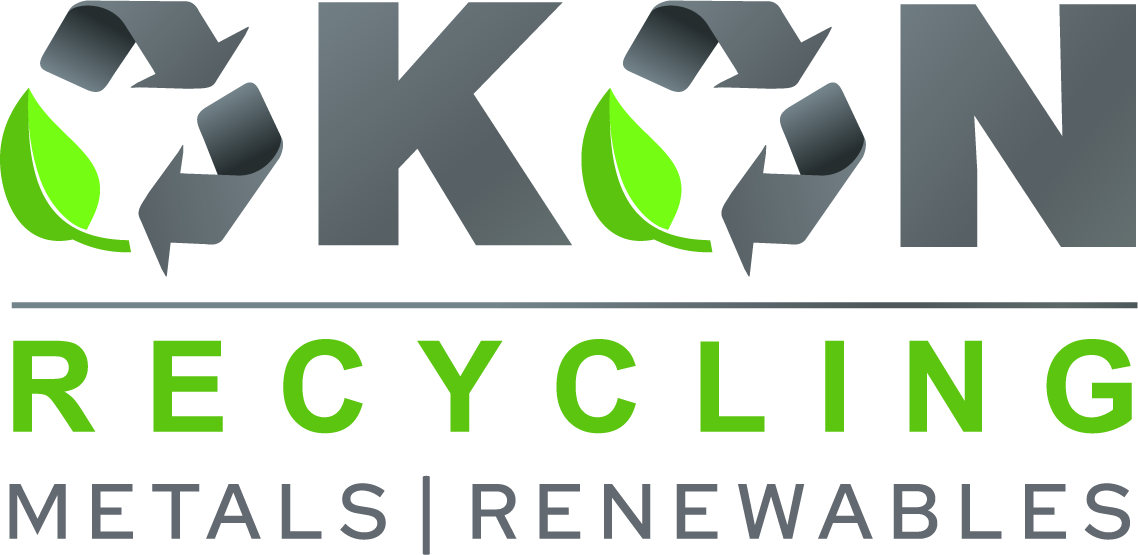5901 Botham Jean Blvd, Dallas, TX 75215
What is ISO 14001? A Guide to Environmental Management
March 28, 2025What is ISO 14001? It’s the gold standard for environmental stewardship in the business world. This internationally recognized framework empowers organizations to manage their environmental impact effectively, transforming sustainability from a buzzword into a business practice. With over 360,000 certifications issued globally, ISO 14001 has become the roadmap for companies committed to reducing their ecological footprint.
ISO 14001 is more than just a certificate to display. It is a powerful tool that provides organizations with a structured approach to identify, manage, and continually improve their environmental performance. From multinational corporations to local nonprofits, ISO 14001 offers a flexible framework adaptable to organizations of all sizes and sectors.
At its core, ISO 14001 fosters a culture of environmental responsibility. It challenges organizations to look beyond compliance and embrace proactive measures that benefit both the planet and their bottom line.
What are the Key Components of ISO 14001?

ISO 14001, the globally recognized standard for environmental management systems (EMS), provides organizations with a structured framework to manage their environmental responsibilities effectively. At its core, ISO 14001 consists of several interconnected components that work together to create a systematic approach to environmental stewardship.
Let’s examine the key elements of ISO 14001 to understand their contribution to a robust EMS:
Environmental Policy Development
The foundation of any ISO 14001-compliant EMS is a well-crafted environmental policy. This important document serves as a public declaration of an organization’s commitment to environmental protection and continuous improvement.
A strong environmental policy should outline the company’s environmental objectives, compliance commitments, and overall vision for sustainability. It’s not just a piece of paper – it’s a guiding light for all environmental initiatives within the organization.
For example, a company might commit to reducing its carbon footprint by 50% within five years or eliminating single-use plastics from its operations. These clear, measurable goals provide direction and purpose to the EMS.
Planning
Once the environmental policy is in place, the next step is thorough planning. This phase involves identifying environmental aspects and impacts, legal requirements, and setting objectives and targets.
Organizations must conduct a comprehensive environmental review to understand how their activities, products, and services interact with the environment. This process helps pinpoint areas where improvements can be made.
For instance, a manufacturing company might identify energy consumption, waste generation, and water usage as significant environmental aspects. By understanding these impacts, they can develop targeted strategies for improvement.
Implementation and Operation
With a solid plan in place, organizations move on to the implementation phase. This involves putting the EMS into action by allocating resources, assigning responsibilities, and establishing operational controls.
Effective implementation requires clear communication across all levels of the organization. Employees need to understand their roles in achieving environmental objectives and be equipped with the necessary tools and training.
For example, a company might implement a new recycling program, install energy-efficient lighting, or introduce a sustainable procurement policy. These operational changes bring the environmental policy to life.
Performance Evaluation
An essential component of ISO 14001 is the continuous monitoring and measurement of environmental performance. This involves regular audits, data collection, and analysis to track progress against set objectives.
Performance evaluation helps organizations identify areas of success and opportunities for improvement. It’s not just about ticking boxes – it’s about gaining real insights into the effectiveness of the EMS.
For instance, a company might track its monthly energy consumption, waste diversion rates, or water usage to assess progress towards its environmental goals. This data-driven approach ensures accountability and drives continuous improvement.
Continuous Improvement
The journey towards environmental excellence doesn’t end with implementation – it’s an ongoing process of refinement and enhancement. ISO 14001 emphasizes the importance of continual improvement in environmental performance.
This component involves regularly reviewing the EMS, addressing non-conformities, and updating objectives based on performance data and changing circumstances. It’s about staying agile and responsive to new environmental challenges and opportunities.
For example, as technology advances, a company might identify new ways to reduce its environmental impact, such as adopting renewable energy sources or implementing advanced waste reduction technologies.
Benefits of Implementing ISO 14001

Organizations today are increasingly recognizing the value of implementing robust environmental management systems. ISO 14001, the internationally recognized standard for environmental management, offers a structured framework that can yield substantial benefits for businesses of all sizes and sectors.
Key advantages organizations can gain by adopting ISO 14001 include:
Improved Resource Efficiency and Waste Reduction
ISO 14001 focuses on optimizing resource use and minimizing waste. By implementing this standard, companies can identify opportunities to streamline operations and reduce their environmental footprint.
For instance, a study by CCS Risk found that organizations implementing ISO 14001 often experience significant reductions in energy consumption and waste production. This not only benefits the environment but also translates to substantial cost savings for the business.
A medium-sized manufacturing company that implemented ISO 14001 conducted a comprehensive review of their processes, identifying several areas where energy was wasted. After targeted improvements, they achieved a 15% reduction in energy costs within the first year.
| Sector | Reduction in Energy Intensity | Time Period |
|---|---|---|
| Residential | 15.6% | 2009-2015 |
| Industrial (General Motors) | 20% | 2010-2020 |
| Industrial (General Mills) | 20% | 2005-2015 |
| Industrial (Intel) | Cumulative 4 billion kWh | 2012-2020 |
Enhanced Legal Compliance
ISO 14001 provides a systematic approach to identifying and managing compliance with relevant legal requirements.
By implementing ISO 14001, companies can develop robust systems to track and monitor their compliance status, reducing the risk of costly fines and penalties. This proactive approach can also help build trust with regulatory bodies.
A chemical processing plant that implemented ISO 14001 created a comprehensive database of all applicable environmental regulations, allowing them to stay ahead of regulatory changes and maintain full compliance, avoiding potential legal issues.
Stronger Reputation for Environmental Responsibility
In an era where consumers and stakeholders are increasingly concerned about environmental issues, demonstrating a commitment to sustainability can significantly enhance an organization’s reputation.
ISO 14001 certification serves as a globally recognized symbol of environmental responsibility. It signals to customers, investors, and the wider community that an organization is actively managing its environmental impacts.
A large retail chain that implemented ISO 14001 across its operations saw a measurable increase in customer loyalty and positive brand perception after publicizing their certification, leading to increased sales and market share.
Cost Savings and Operational Efficiency
While implementing ISO 14001 requires an initial investment, many organizations find that the long-term benefits far outweigh the costs. The focus on continual improvement inherent in the ISO 14001 framework often leads to significant operational efficiencies and cost savings.
These savings can come from various sources, including reduced energy consumption, decreased waste management costs, and more efficient use of raw materials. A food processing company that implemented ISO 14001 reduced its water consumption by 30%, resulting in substantial cost savings and reduced environmental impact.
Increased Stakeholder Confidence and Competitive Advantage
ISO 14001 certification can significantly boost an organization’s credibility with various stakeholders, including customers, investors, and local communities. This enhanced trust can translate into tangible business benefits, such as increased customer loyalty and improved access to capital.
Moreover, in many industries, ISO 14001 certification is becoming a prerequisite for doing business. Organizations that achieve certification often find themselves at a competitive advantage when bidding for contracts or entering new markets.
A small engineering firm, for example, secured a major government contract largely due to their ISO 14001 certification, which set them apart from competitors without formal environmental management systems.
While implementing ISO 14001 requires commitment and effort, the potential benefits are substantial and wide-ranging. From improved resource efficiency and legal compliance to enhanced reputation and competitive advantage, ISO 14001 can be a powerful tool for organizations looking to improve their environmental performance and overall business success.
Integrating ISO 14001 with Other Management Systems
Organizations are increasingly recognizing the value of integrating ISO 14001 with other management systems. This strategic approach streamlines operations and enhances overall performance across multiple domains. By combining ISO 14001 (Environmental Management) with standards like ISO 9001 (Quality Management) and ISO 45001 (Occupational Health and Safety), companies can create a more cohesive and efficient management framework.
One primary benefit of integration is the elimination of redundancies. For instance, a manufacturing company can consolidate its documentation processes, reducing paperwork and saving time. This streamlining extends to audits as well. Instead of conducting separate audits for each standard, organizations can perform integrated audits, significantly reducing the time and resources spent on compliance activities.
Another advantage is improved risk management. By aligning environmental considerations with quality and safety protocols, businesses can develop more comprehensive risk assessment strategies. For example, a chemical processing plant might identify potential environmental hazards that also pose safety risks to workers, allowing for more effective mitigation measures to be implemented simultaneously.
Benefits for Different Types of Organizations
The benefits of integrated management systems are evident across various industries. In construction, companies can align their environmental impact assessments with safety protocols, ensuring that sustainable building practices also prioritize worker well-being. This approach can lead to more efficient project management and an enhanced reputation in an increasingly eco-conscious market.
For service-based organizations, such as consulting firms, integration can result in more holistic client solutions. By considering environmental, quality, and safety aspects together, consultants can provide comprehensive advice that addresses multiple facets of their clients’ operations. This integrated perspective often leads to more innovative and sustainable business strategies.
In healthcare, integrating ISO 14001 with other standards can have profound impacts. Hospitals and clinics can align their waste management practices with infection control protocols, leading to more efficient and safer healthcare environments. This integration not only improves patient care but also contributes to cost savings and regulatory compliance.
Challenges and Considerations
While the benefits of integration are significant, organizations should be aware of potential challenges. One common hurdle is resistance to change from employees accustomed to working within separate systems. To address this, companies need to invest in comprehensive training programs and clear communication strategies. For instance, a large retail chain might develop targeted training modules for different departments, explaining how the new system impacts their specific roles.
Another consideration is the initial investment required for integration. While long-term benefits often outweigh these costs, organizations need to carefully plan and budget for the transition. This might involve hiring specialized consultants, upgrading IT systems, or dedicating significant staff time to the integration process.
Despite these challenges, the long-term advantages of integrating ISO 14001 with other management systems are compelling. According to a study by DNV, organizations can save up to 20% in training and development costs and 10-40% in operational expenses through integrated systems. These figures underscore the potential for significant improvements in efficiency and cost-effectiveness.
Future Trends in Integrated Management Systems
As businesses continue to evolve, so will the approach to integrated management systems. We’re likely to see increased incorporation of digital technologies, such as AI and machine learning, to enhance the efficiency of these systems. For example, predictive analytics could forecast potential environmental impacts, quality issues, and safety risks simultaneously, allowing for proactive management across all areas.
Moreover, the growing emphasis on sustainability and corporate social responsibility is likely to drive further integration of environmental management systems with broader business strategies. Companies might start integrating ISO 14001 not just with quality and safety standards, but also with emerging frameworks for social responsibility and sustainable development.
The integration of ISO 14001 with other management systems represents a powerful strategy for organizations seeking to enhance their performance, reduce costs, and improve their overall impact. By breaking down silos between environmental, quality, and safety management, businesses can create more resilient, efficient, and sustainable operations. As the business world continues to evolve, this integrated approach will likely become not just a competitive advantage, but a necessity for long-term success.
| Benefit | Description |
| Streamlined Processes | Eliminates redundancies and improves resource utilization, leading to reduced operational costs. |
| Improved Waste Management | Better waste management practices reduce waste disposal costs and promote efficient material use. |
| Reduced Workplace Incidents | Integrating health and safety systems lowers costs related to injuries and workers’ compensation claims. |
| Integrated Audits | Conducting integrated audits reduces the time and cost associated with multiple separate audits. |
Embracing Environmental Responsibility through ISO 14001
The journey towards ISO 14001 compliance and certification can transform organizations of all sizes and industries. It enhances environmental performance, drives operational efficiency, reduces costs, and improves stakeholder relationships. As businesses face increasing scrutiny over their environmental practices, ISO 14001 certification can be a powerful differentiator in the marketplace.
For those embarking on this journey, partnering with experienced professionals in sustainable waste management can be invaluable. Okon Recycling, with its extensive expertise in recycling and waste reduction, is well-positioned to assist organizations in aligning their practices with ISO 14001 requirements. Their tailored solutions help businesses navigate the complexities of environmental management while maximizing the benefits of sustainable practices.
As you consider the next steps for your organization’s environmental strategy, explore the potential of ISO 14001 and its positive impact on your operations and reputation. To learn more about how Okon Recycling can support your journey towards environmental excellence and ISO 14001 compliance, contact Okon Recycling at 214-717-4083. Together, we can build a more sustainable future for your business and our planet.
